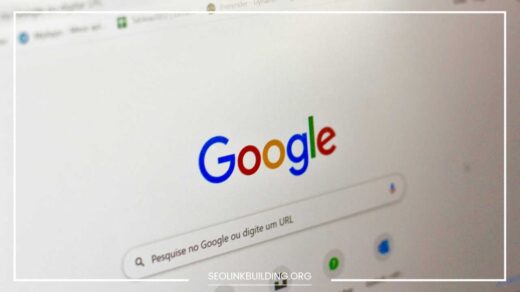In-Depth Guide to On-Page SEO Optimization

On-Page SEO
On-page SEO optimization is a fundamental aspect of search engine optimization (SEO) that focuses on optimizing individual web pages to improve their search engine rankings and attract organic traffic.
By optimizing various on-page elements, website owners can signal to search engines that their content is relevant, valuable, and worthy of higher rankings.
In this comprehensive guide, we will delve into the world of on-page SEO optimization, exploring key techniques and best practices to enhance the visibility and performance of your web pages in search results.
On-page SEO optimization is the process of fine-tuning individual web pages to make them more search engine-friendly and user-friendly.
It involves optimizing various on-page elements, such as content, meta data, URL structure, and images, to improve a web page’s visibility and organic traffic.
By implementing on-page SEO techniques and best practices, website owners can provide valuable content to users and send positive signals to search engines, leading to higher search rankings and increased organic traffic.
Understanding On-Page SEO
On-page SEO revolves around optimizing elements that are directly on the web page, as opposed to off-page SEO, which focuses on external factors like backlinks.
On-page SEO ensures that a web page is relevant to specific search queries and provides a positive user experience.
On-page SEO includes keyword research and targeting, content optimization, URL structure, image optimization, internal linking, user experience, mobile optimization, structured data, and security features.
By effectively optimizing each of these elements, website owners can enhance the on-page SEO of their web pages.
Keyword Research and Targeting
Keyword research is the foundation of on-page SEO optimization. It involves identifying relevant keywords and phrases that users enter into search engines when looking for specific information or solutions.
Conducting Keyword Research
Use keyword research tools to identify keywords relevant to your content and industry. Look for keywords with high search volumes and low competition to target effectively.
Identifying Long-Tail Keywords
Long-tail keywords are longer and more specific keyword phrases that target niche audiences. Targeting long-tail keywords can lead to higher search rankings and attract more relevant organic traffic.
Keyword Targeting and Placement
Incorporate targeted keywords naturally into your content. Place keywords in the meta title, meta description, headings, and throughout the body of the content. However, avoid keyword stuffing, as it can harm your SEO efforts.
Creating High-Quality and Relevant Content
High-quality and relevant content is a critical factor in on-page SEO optimization. Search engines prioritize content that provides value to users and addresses their queries.
Content Structure and Formatting
Organize your content with a clear and logical structure. Use paragraphs, headings, and bullet points to make your content easy to read and navigate.
Writing Engaging Meta Titles and Descriptions
Write compelling meta titles and descriptions that accurately describe the content of the web page and entice users to click through to your site from search results.
Utilizing Header Tags (H1, H2, H3)
Use header tags (H1, H2, H3, etc.) to structure your content and make it easier for search engines to understand the hierarchy and relevance of different sections on the web page.
Optimizing URL Structure
A clean and descriptive URL structure is essential for on-page SEO optimization. Use short and keyword-rich URLs that accurately reflect the content of the page.
Avoid using dynamic parameters and irrelevant characters in URLs. Use hyphens to separate words for better readability.
Image Optimization
Images play a crucial role in enhancing the user experience on a web page. Optimize images by compressing them to reduce file size without compromising quality.
Add descriptive alt text to images, allowing search engines to understand the content of the images and improve accessibility for users with visual impairments.
Internal Linking Strategy
Internal linking involves linking to other pages within your website. It helps search engines discover and index your content more efficiently.
Strategically link to relevant and related content within your website to guide users and search engines through your site’s content hierarchy.
User Experience and Page Speed
User experience is a significant factor in on-page SEO optimization. Provide a user-friendly interface, easy navigation, and relevant content to enhance the user experience.
Improve page loading speed by compressing images, minifying CSS and JavaScript files, and leveraging browser caching. A faster-loading website leads to lower bounce rates and better search rankings.
Mobile Optimization
With mobile usage on the rise, mobile optimization is crucial for on-page SEO. Ensure that your web pages are responsive and adapt seamlessly to different screen sizes.
Use Google’s Mobile-Friendly Test tool to check the mobile-friendliness of your web pages and make necessary adjustments for a better mobile user experience.
Utilizing Structured Data and Schema Markup
Structured data and schema markup provide additional context to search engines about the content of a web page. Implementing structured data can lead to rich search results with additional information like ratings, reviews, and event details.
Use schema markup to mark up important elements on your web pages and help search engines understand your content better.
Implementing SSL (HTTPS) for Security
Implementing SSL (Secure Sockets Layer) provides a secure and encrypted connection between a user’s browser and your website server. SSL not only enhances security but also sends a positive signal to search engines, leading to a potential ranking boost.
Avoiding On-Page SEO Pitfalls
Avoid common on-page SEO mistakes, such as keyword stuffing, duplicate content, and broken links. Keep your content unique, relevant, and error-free to maintain a positive SEO performance.
Measuring and Tracking On-Page SEO Success
Use analytics tools like Google Analytics and Google Search Console to measure and track the success of your on-page SEO efforts.
Monitor web traffic, search rankings, and user behavior to identify areas for improvement and refine your on-page SEO strategy.
Final Remarks
On-page SEO optimization is a critical aspect of a successful SEO strategy. By focusing on keyword research, content quality, URL structure, image optimization, user experience, mobile optimization, and other on-page elements, website owners can enhance their web pages’ visibility and attract more organic traffic.
Follow the best practices outlined in this guide, and continuously monitor and adapt your on-page SEO strategy to keep up with search engine algorithms and user behavior. With effective on-page SEO optimization, you can achieve higher search rankings and drive more organic traffic to your website.
FAQs
How does on-page SEO differ from off-page SEO?
On-page SEO focuses on optimizing elements directly on a web page, such as content, meta data, and URLs. Off-page SEO, on the other hand, deals with external factors like backlinks and social signals that influence a website’s authority and reputation.
Why is content quality important for on-page SEO?
Content quality is vital for on-page SEO because search engines prioritize valuable and relevant content. High-quality content provides value to users and encourages them to engage with the web page, leading to improved search rankings.
How can I optimize images for on-page SEO?
To optimize images for on-page SEO, compress them to reduce file size without sacrificing quality. Add descriptive alt text to images to help search engines understand their content and improve accessibility for users.
Is mobile optimization necessary for on-page SEO?
Yes, mobile optimization is crucial for on-page SEO. With an increasing number of users accessing the internet on mobile devices, search engines prioritize mobile-friendly websites for better user experience and higher search rankings.
Should I implement structured data and schema markup on my web pages?
Implementing structured data and schema markup can enhance your web pages’ appearance in search results with rich snippets and additional information. It can lead to higher click-through rates and improved search visibility.













